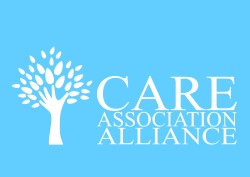Skills for Care – The state of Adult Social Care Sector and Workforce in England report 2022
As you may be aware, Skills for Care publish an annual report on the state of the adult social care sector and workforce which provides a comprehensive analysis of the social care workforce in England and the characteristics of then 1.5m people working in it. I am pleased to give you early sight of the 2022 State of report
A virtual launch event is taking place on Tuesday 11 October 09:30 – 11.30am, if you would like to attend and haven’t already booked a place you can still do so here.
Since 2012/2013, we have published annual reports which help us and our partners understand the trends in the workforce, identify challenges and target solutions. Our previous reports have helped inform key decisions at all levels, and the data this year highlights the importance of implementing the ‘People at the heart of care’ white paper and the need for a workforce plan for social care.
The key findings include:
- An estimated 17,900 organisations were involved in providing or organising adult social care in England as at 2021/22. Those services were delivered in an estimated 39,000 establishments. There were also 65,000 individuals employing their own staff.
- The total number of adult social care posts in 2021/22 was 1.79m. 1.62m of these posts were filled by a person (filled posts) and 165,000 were posts that employers were actively seeking to recruit somebody to (vacancies).
- The vacancy rate has risen to 10.7%, the highest rate since we started recording in 2012/13. The number of vacancies increased by 52% in 2021/22 (by 55,000 to 165,000 vacant posts).
- The number of full-time equivalent filled posts was estimated at 1.17 million and the number of people working in adult social care was estimated at 1.50 million in 2021/22; more than in the NHS (headcount of 1.4 million).
- In April 2021, the NLW rose from £8.72 to £8.91 (2.2% in nominal terms). This increase contributed to a 5.4% increase in the median nominal care worker hourly rate from March 2021 to March 2022. This was the second highest increase over the recorded period. However, in real terms, the median hourly rate decreased by 1.5% between March 2021 and March 2022.
- Our forecasts show that if the number of adult social care posts grows proportionally to the projected number of people aged 65 and over in the population between 2021 and 2035, an increase of 27% (480,000 extra posts) would be required by 2035.
- The adult social care sector was estimated to contribute £51.5 billion gross value added (GVA) per annum to the economy in England (up 2% from 2020/21).
More information can be found on the Workforce Intelligence webpage.
The report is produced using the data from the Adult Social Care Workforce Data Set (ASC-WDS). We are grateful to all the social care providers who use the ASC-WDS online service, without their contributions, estimates of this detail and accuracy wouldn’t be possible.
If you would like to know more from the data and what services Skills for Care can offer, please contact influencing@skillsforcare.org.uk.

